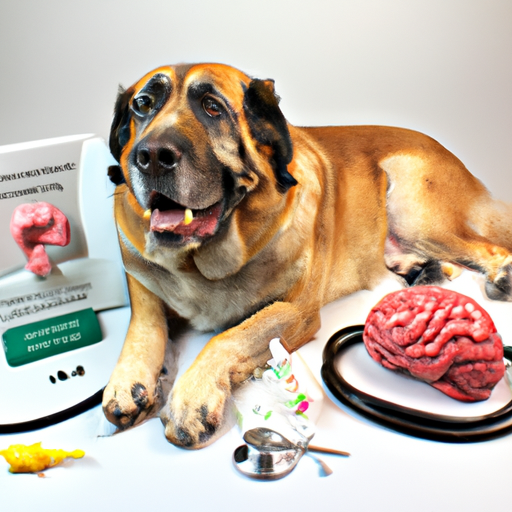As a caregiver, it’s vital to understand the various health conditions that can affect your furry friend. One such illness that isn’t widely understood is Canine Cushing’s disease. This article will explore everything you need to know about the disease from symptoms, diagnosis, treatment options, and how to best care for a dog with Cushing’s disease.
1. Understanding Cushing’s Disease
Cushing’s disease, or hyperadrenocorticism as it’s scientifically known, is a condition that occurs when a dog’s body produces too much of a hormone called cortisol. Cortisol is produced and stored by the adrenal glands, two small glands that sit on top of the kidneys. This hormone helps manage stress, ward off infections, maintains a dog’s weight, and keeps their blood sugar levels in check. However, when too much cortisol is produced, it can lead to serious health issues – this is what we refer to as Cushing’s disease.
2. Symptoms of Cushing’s Disease
Recognizing the symptoms of Cushing’s disease early can make a significant difference in managing the condition. Common symptoms include:
- Increased thirst and urination
- Increased appetite
- Skin changes (darkening, thinning, bruising easily)
- Hair loss
- Pot-bellied appearance
- Lethargy or decreased activity
Remember, while these symptoms can be indicative of other illnesses too, it’s essential to consult a veterinarian if you notice any changes in your dog’s behavior or appearance.
3. Diagnosis of Cushing’s Disease
Diagnosing Cushing’s disease can be a complex process. Veterinarians will typically perform a series of tests, including:
- Blood and urine tests: These help to identify any abnormalities that might be caused by Cushing’s disease.
- ACTH Stimulation test: This test measures how well the adrenal glands respond to a hormone called ACTH.
- Low-dose dexamethasone suppression (LDDS) test: This test measures how well the body can suppress cortisol production.
| Test Type | Purpose |
|---|---|
| Blood and urine tests | Identify abnormalities |
| ACTH Stimulation test | Measure adrenal gland response |
| LDDS test | Measure cortisol suppression |
4. Treatment Options for Cushing’s Disease
The treatment for Cushing’s disease largely depends on the cause. There are two types of Cushing’s disease:
- Pituitary-dependent: This is caused by a benign tumor in the pituitary gland and is the most common type.
- Adrenal-dependent: This is caused by a tumor in one of the adrenal glands.
Treatment can include medication to control the production of cortisol, surgery to remove adrenal tumors, or radiation therapy for pituitary tumors. It’s essential to discuss these options with your vet to find the most appropriate treatment plan for your dog.
5. Caring for a Dog with Cushing’s Disease
Caring for a dog with Cushing’s disease can be challenging, but your love and support can make a world of difference. This includes:
- Regular vet visits: This ensures that the condition is monitored and any changes in your dog’s health are addressed promptly.
- Healthy diet: A balanced diet can help manage symptoms and improve overall health.
- Regular exercise: This can help maintain a healthy weight and improve your dog’s quality of life.
FAQs
Q1: Is Cushing’s disease contagious?
No, Cushing’s disease is not contagious. It’s a hormonal disorder.
Q2: Can Cushing’s disease be cured?
While Cushing’s disease can’t be cured, it can be managed with appropriate treatment and care.
Q3: Does Cushing’s disease affect a dog’s lifespan?
While Cushing’s disease itself is not typically life-threatening, its symptoms and complications can impact a dog’s quality of life and potentially shorten lifespan if not managed well.
Q4: Can diet and exercise help manage Cushing’s disease?
Yes. A healthy, balanced diet and regular exercise can help manage the symptoms of Cushing’s disease and improve overall health.
Q5: How common is Cushing’s disease in dogs?
Cushing’s disease is relatively common in middle-aged and older dogs, particularly small breeds.



